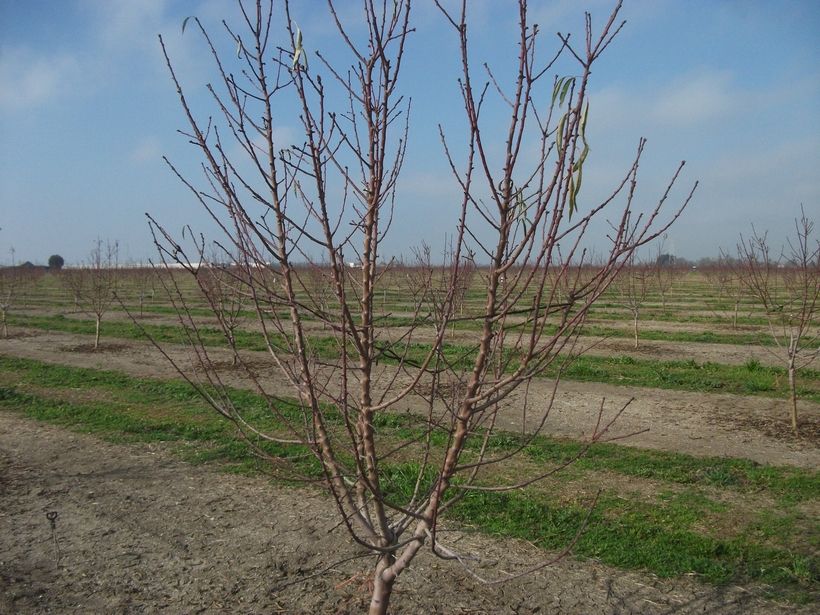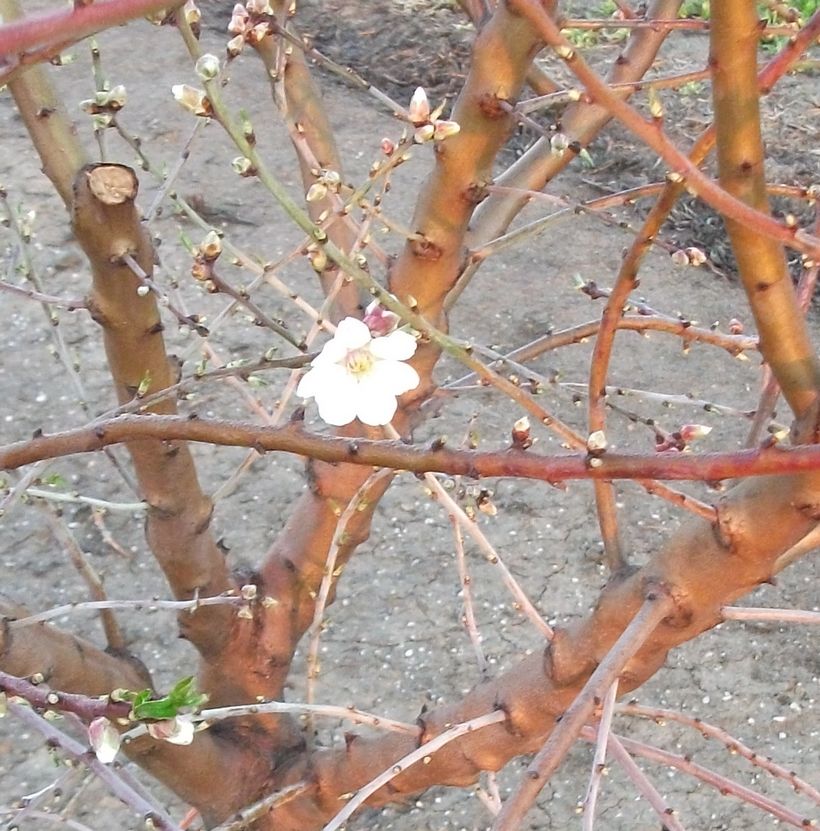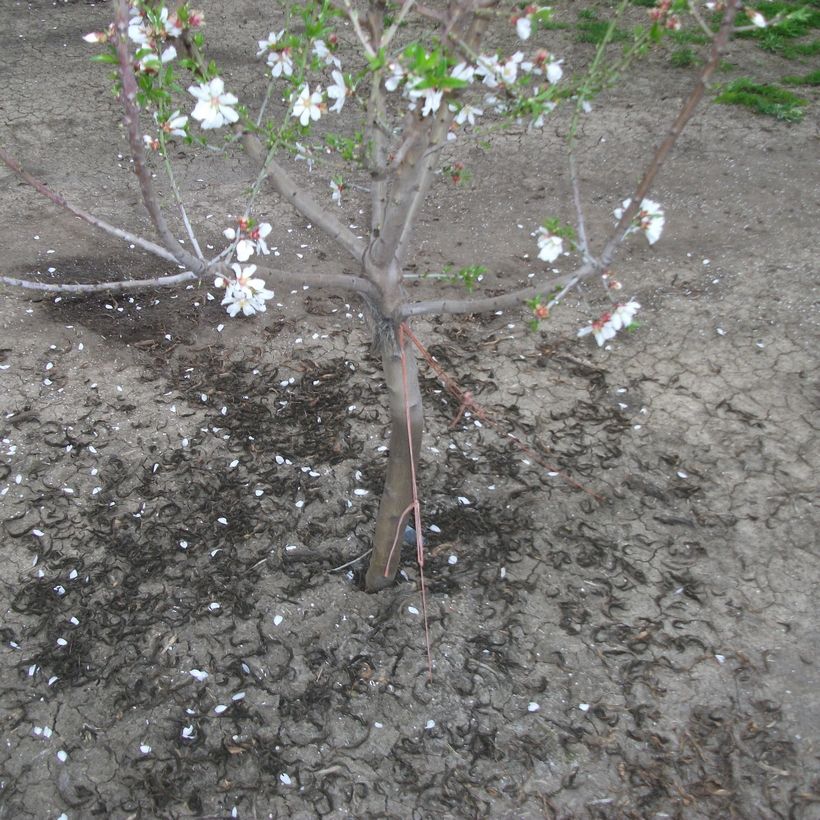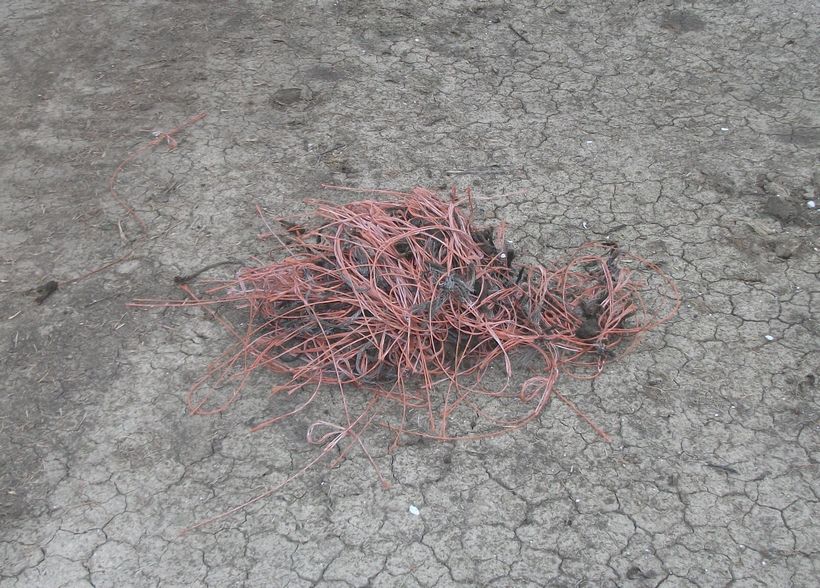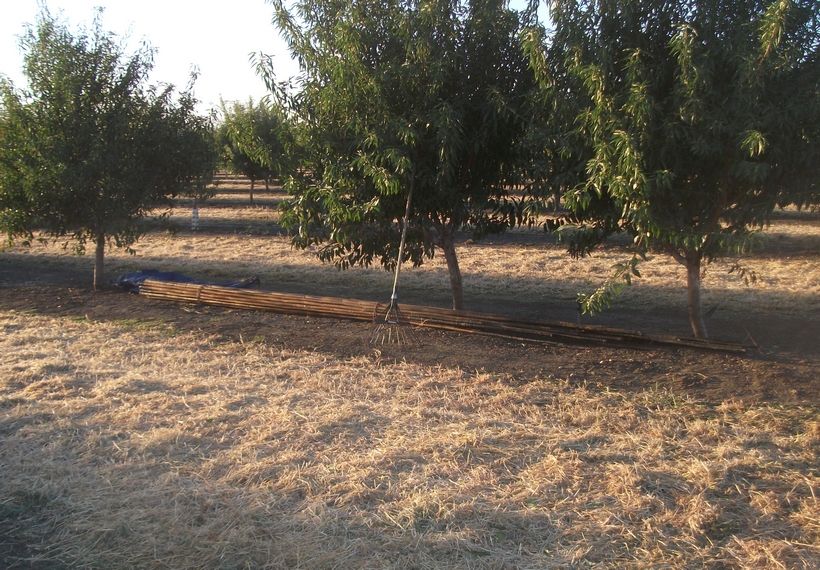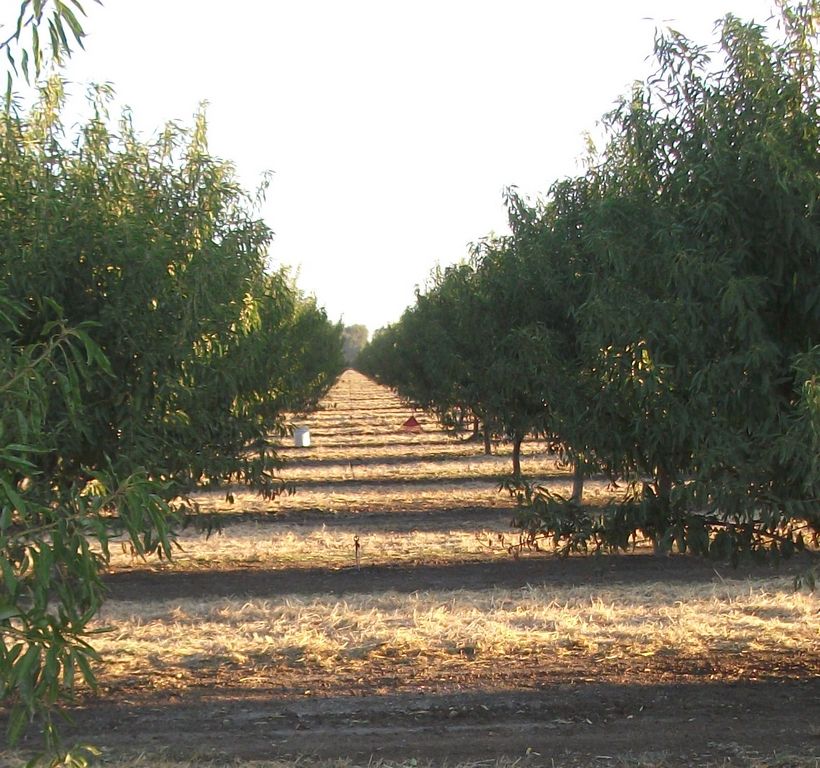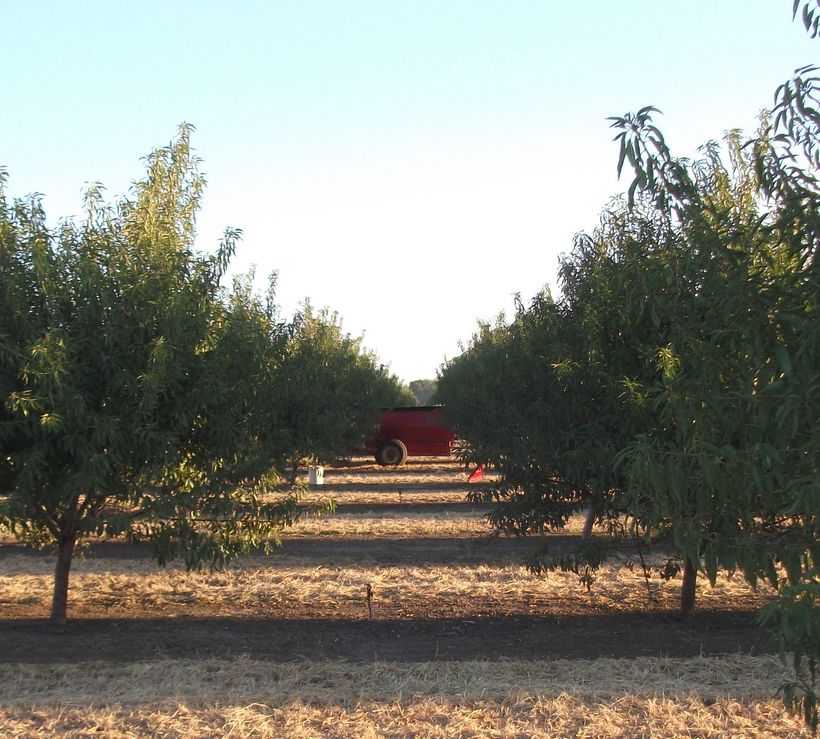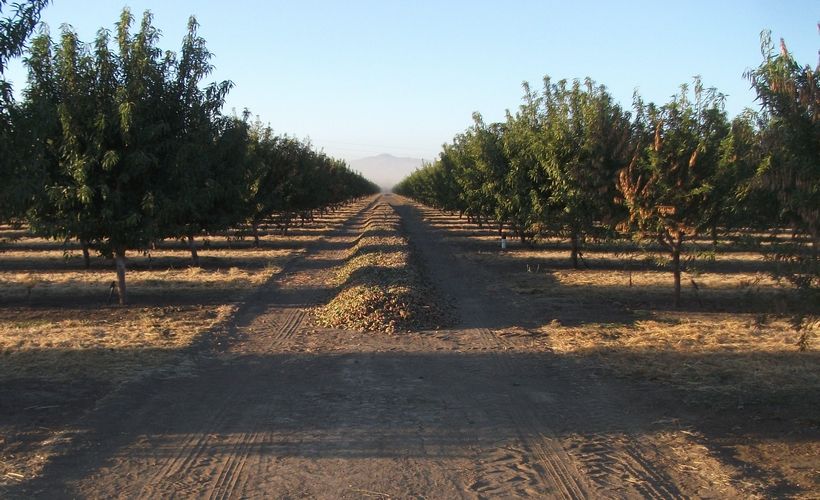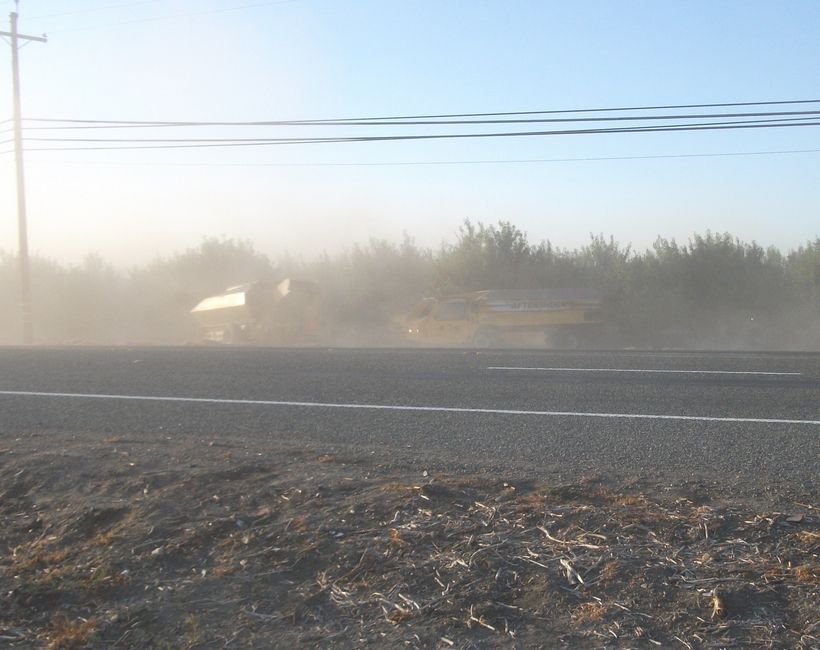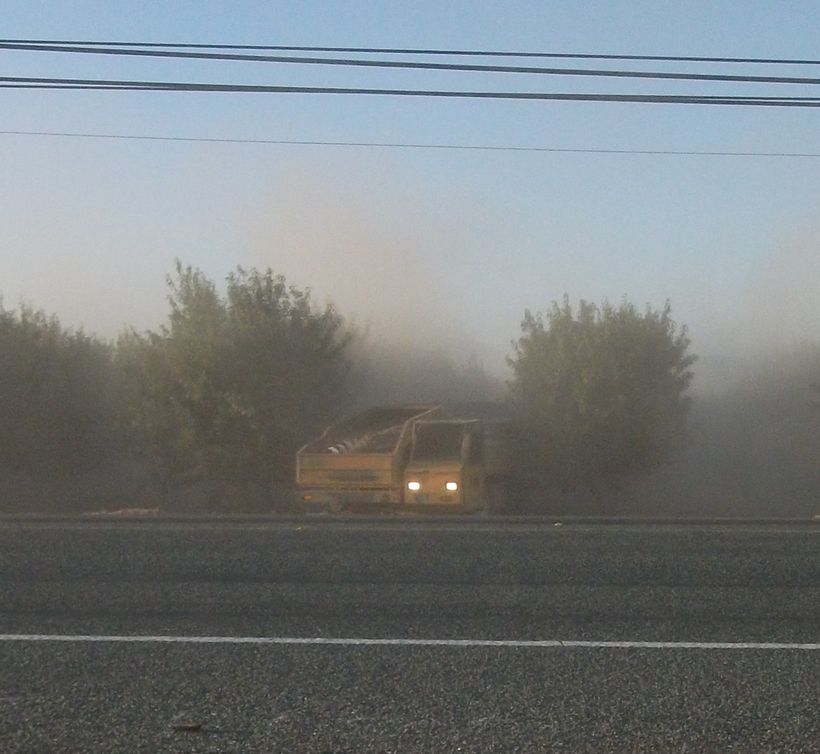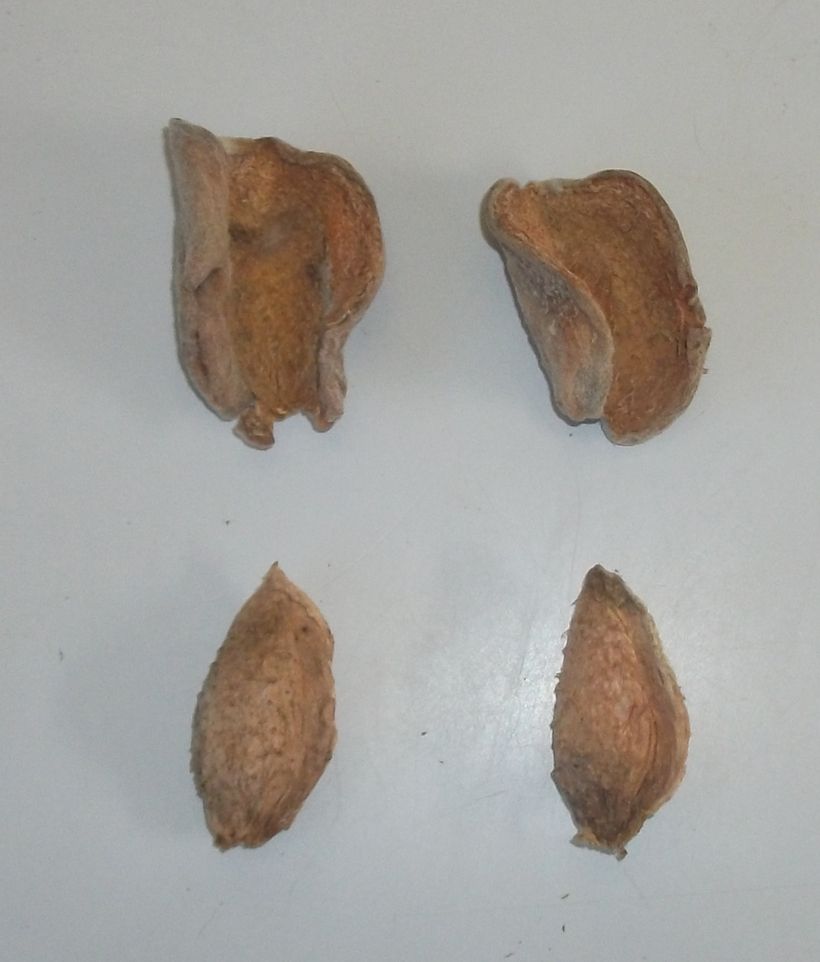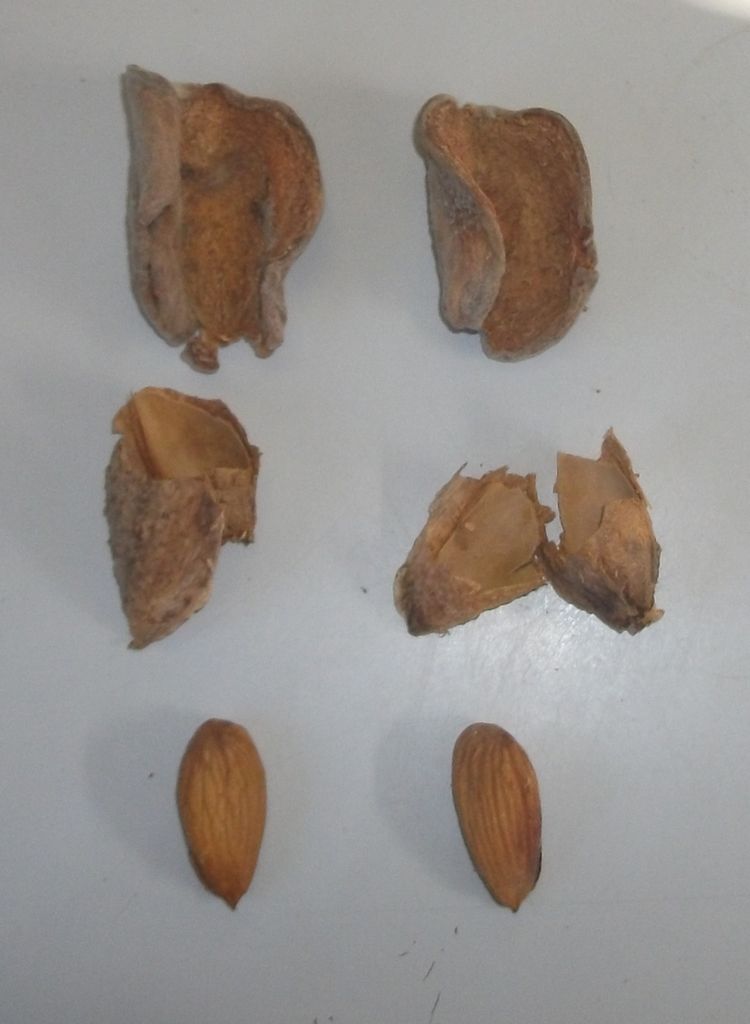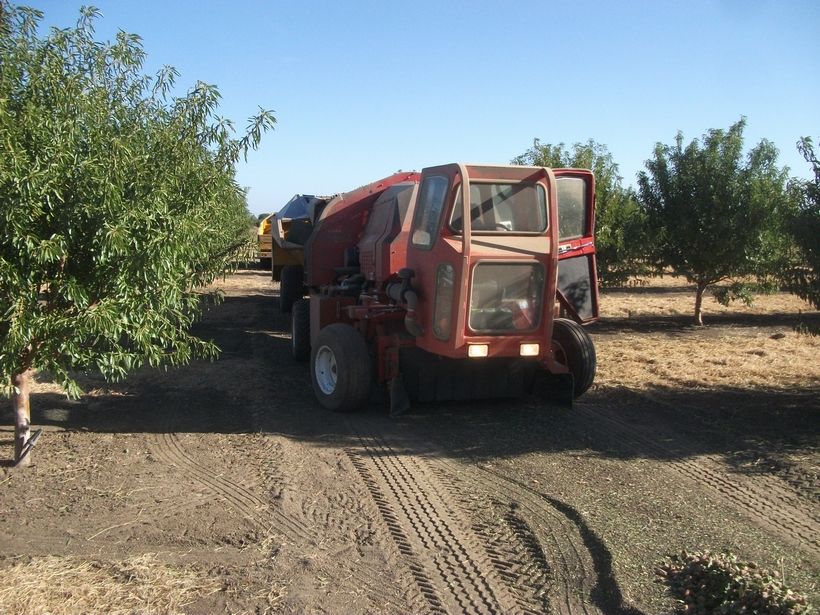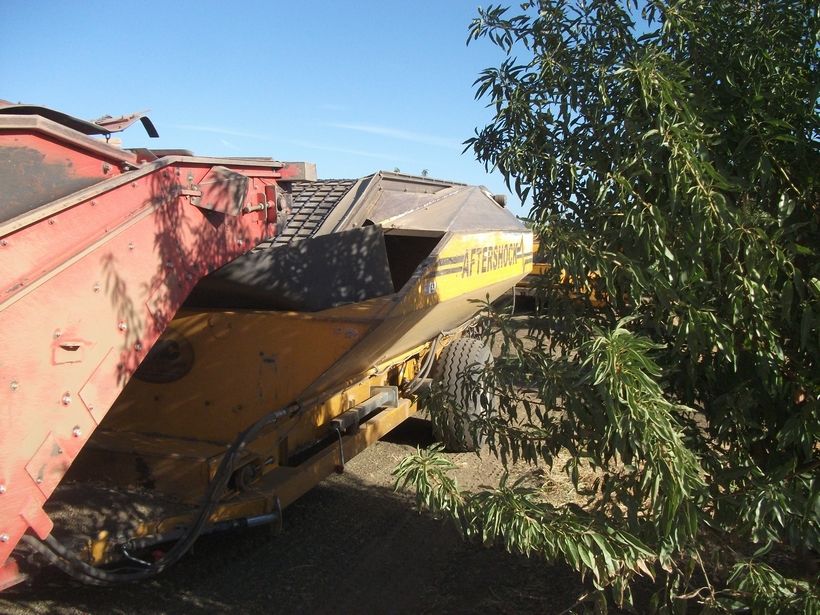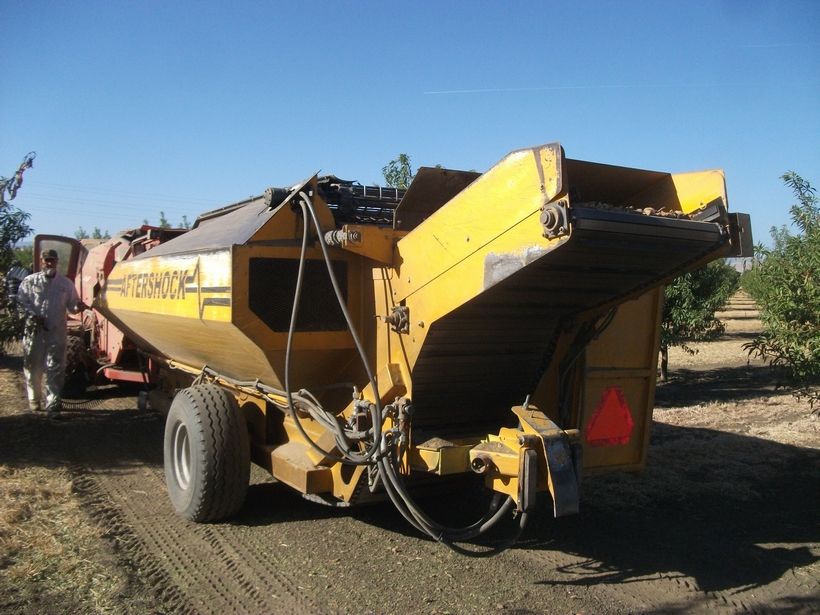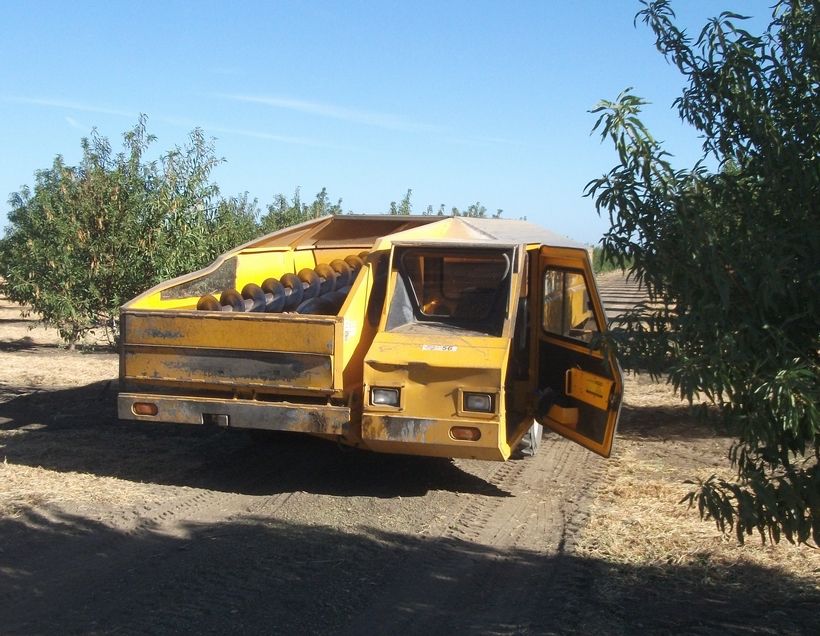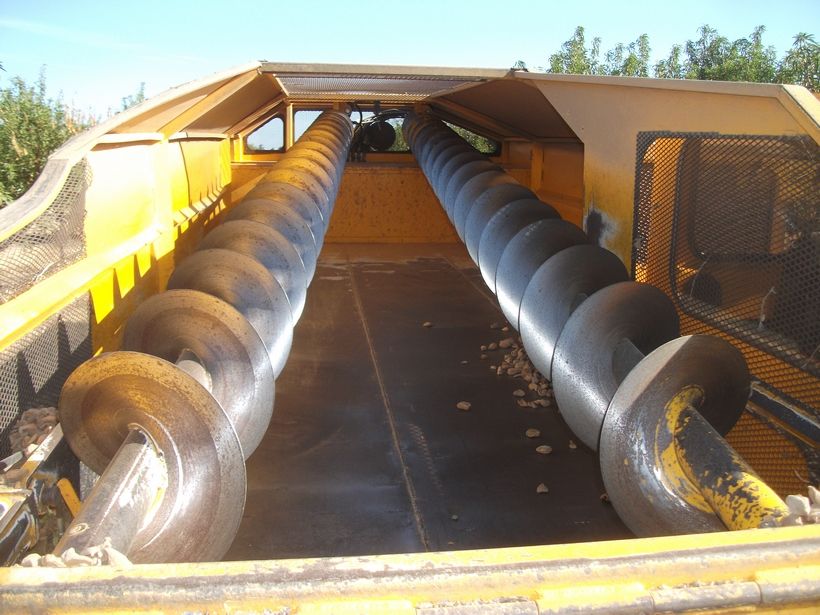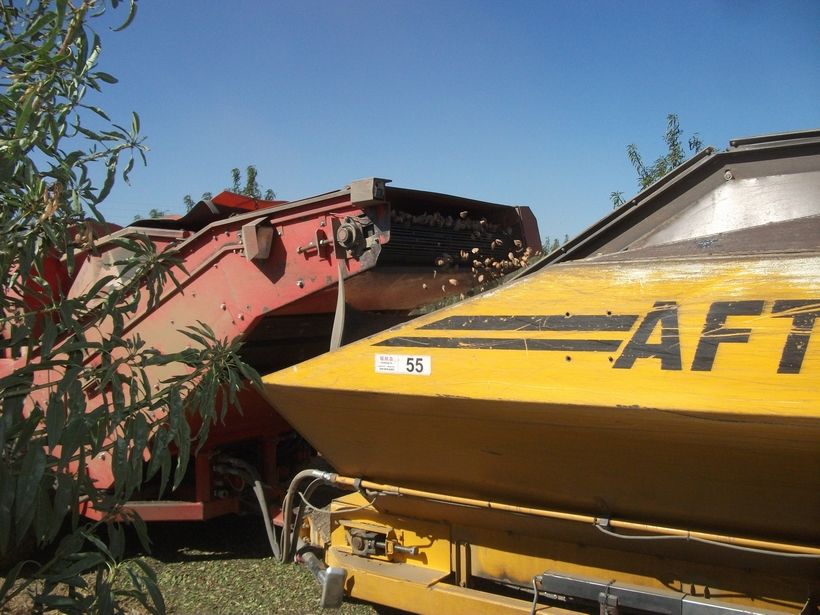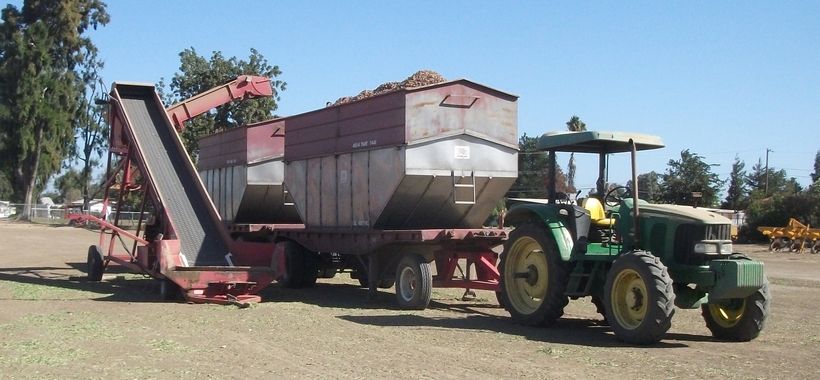HARVEST TIME!!!
Well, it's time to reap the benefits of the process. Unfortunately, the first harvest does little to offset the cost of the orchard planting, but the nuts need to be removed from the tree anyways. Since the trees are small and the crop is light, it is all being done by hand. A crew of 25 or so started the end of last week. Bamboo poles are the tool of choice for removing the nuts from small trees.
There are more weeds in the field than normal, but since there is no mechanical harvesting being done, it isn't an issue. As a side perk, the weed layer helps prevent the ground from drying somewhat.
The nuts are raked into piles and scooped into 5 gallon buckets.
They are then dumped in a cart pulled by a tractor.
Normally, the trees are knocked with a machine that shakes them, then sweepers come by and sweep them into a windrow. After that, a pickup machine picks them up, does a rough pre-cleaning, and conveys them into a cart, which is then taken to a truck trailer and unloaded onto a field conveyor that lifts them into the trailer.
The carts they are using here have bottom dumps, so they are putting all the nuts in a single windrow in the middle of the field that will be picked up by the mechanical harvester when they're done.
Note all of the dust up ahead. That is coming from the orchard across the street, which is a year older. It was harvested completely by machine, so I walked ahead so see if I could get a photo. Pretty dusty and I had to shoot between cars, but here's the pickup machine and one of the newer self-propelled carts that follow the machine.
Here's the next cart that will take the place of the other when it fills up. The pickup machine never has to stop.
I imagine they'll bring that machine to pick these up when they're done knocking here, so I'll try to get closer photos then.
Here's the nuts straight off the tree with hull and shell
Hulled
And shelled.
